Apples come in an astounding variety of flavors, textures, and colors, making them one of the most widely consumed fruits across the globe. They can range from the crisp and tart Granny Smith to the sweet and juicy Fuji, and everything in between. Whether you’re enjoying a fresh, crunchy apple as a snack or baking a batch of caramel-drizzled apple dumplings, this fruit’s versatility is unmatched.

As you stroll through your local grocery store’s produce aisle, you might notice the dazzling array of apple types available. This isn’t just a coincidence; apples have been cultivated for thousands of years, with growers constantly striving to create the perfect apple—in taste, texture, and storability. You may be familiar with popular varieties like the Red Delicious and Gala, which dominate the US apple market, but there is a whole world of less common types waiting to be discovered, each with its own unique story and profile.
Key Takeaways
- Apples offer a diverse range of options, from familiar supermarket staples to rare heirloom varieties.
- Cultivation techniques and apple classification have evolved, contributing to the rich tapestry of apple types available.
- The apple industry not only affects your choice at the market but also influences health trends and the availability of derivative apple products.
History of Apples
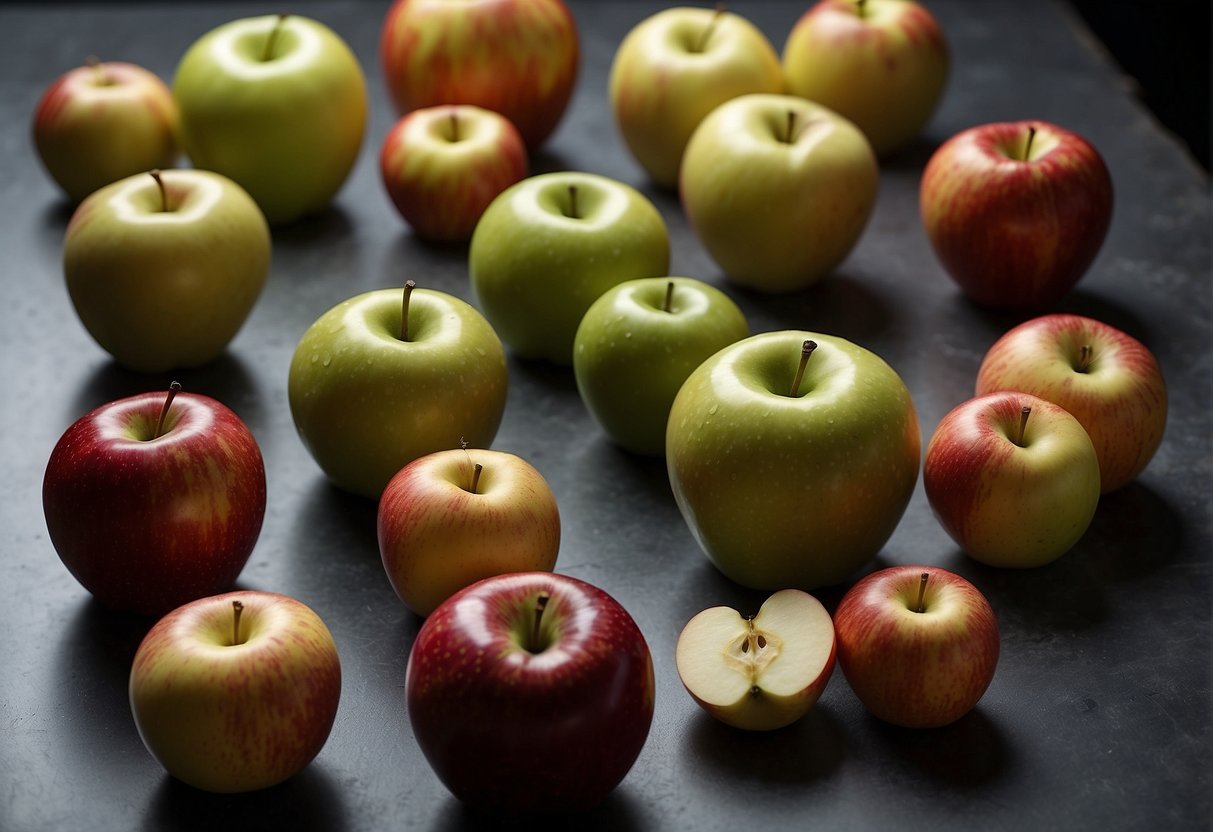
Dive into the fascinating journey from the apple’s humble beginnings to the stunning array of varieties we munch on today! With origins that twist back thousands of years and a cast of thousands (of types!), apples have quite the storied past.
Origins of Cultivation
Believe it or not, your crisp, juicy snack has ancient roots that go way back to Central Asia. The wild ancestor of the apples you love, known as Malus sieversii, was first nurtured and cultivated there. These apple ancestors started a journey that would see them spread across the globe, catching a ride with travelers, traders, and even armies.
Prominent Historical Varieties
Fast forward to a few centuries ago, and the apple scene was bursting with characters. Let’s meet a few of the rock stars:
- Gravenstein: A favorite that rolled into the U.S. from Denmark, making a name for itself with a tart and tangy kick.
- Esopus Spitzenburg: Thomas Jefferson gave it two thumbs up at Monticello for its zesty flavor.
- Newtown Pippin: America’s own, with a story that started in New York and a taste that traveled as a favorite export.
- Ribston Pippin: Came from England boasting some seriously deep roots that traced back to a single tree.
Just imagine biting into an apple with a lineage as distinguished as an old family tree!
Apple Breeding and Development
Now, apple breeding is where things get wild! This isn’t just growing trees; it’s like a massive, tasty experiment. Some varieties were mainstays for decades, while others popped up like surprise guests at a party.
- Cox’s Orange Pippin: Enter the English charmer, the sweet blend of a Ribston Pippin and unknown suitor, wooing taste buds since the 1800s.
- Golden Russet: Think of this one as the golden oldie with a rustic twist—rich and sugary.
- Lady Apple: Petite and pretty, this apple has been around since the Renaissance, a real darling of European courts.
Breeding apples is a story of mixing, matching, and sometimes pure chance, all to create the next apple that keeps the doctor away—or at least keeps your taste buds happy.
Apple Classification
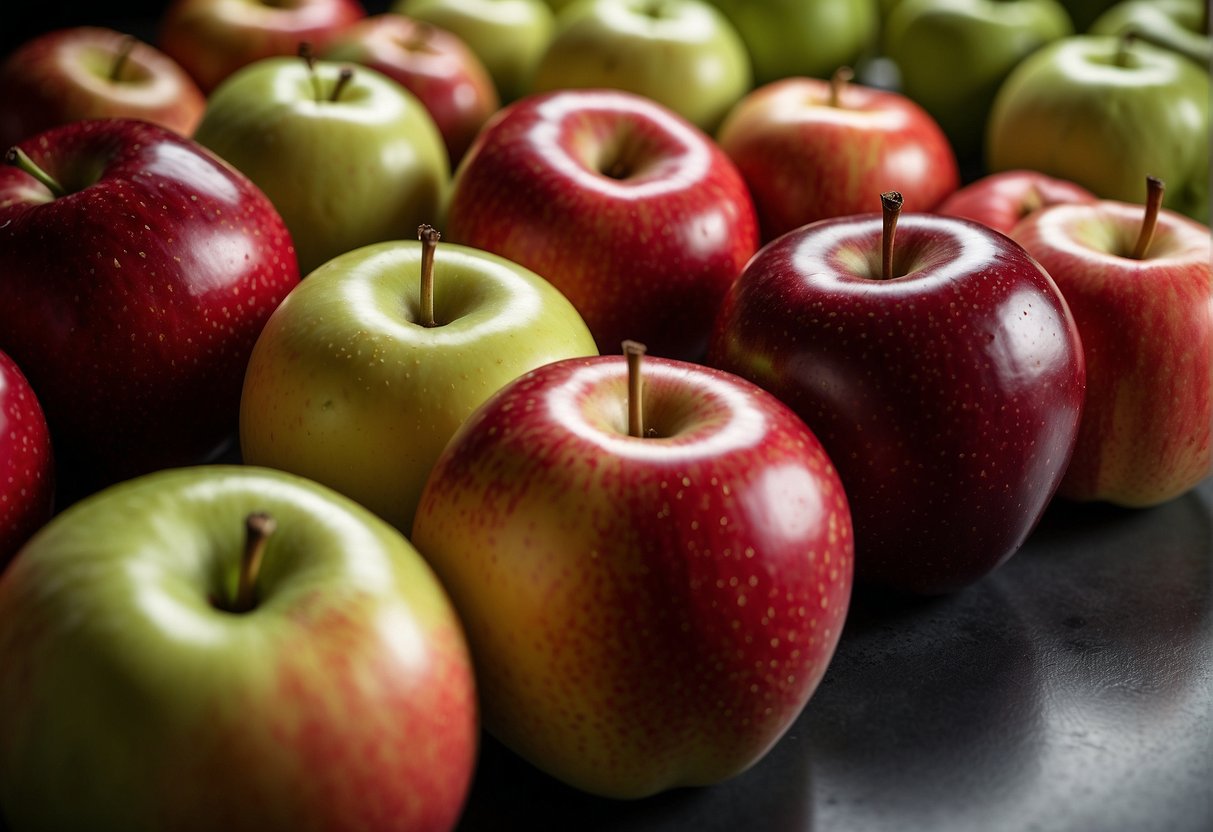
Let’s bite into the juicy world of apple classification. You’ll find that there’s more to these pomaceous fruits than just a pretty peel. Whether you’re whipping up a pie, pressing some cider, or just snacking, there’s an apple out there with your name on it.
Classification by Use
Eating Apples: Crunchy and sweet, these are your go-to for a fresh snack. Think of the Honeycrisp with its explosive crispness, or the Gala, perfect for your lunchbox.
Cooking Apples: Need apples that hold up to the heat? Granny Smiths are tangy titans in the baking world, keeping their shape like a champ.
Cider Apples: Some apples are destined for greatness in a glass. Cider apples can be tannic and sharp; they might not be snackable, but boy, do they make a mean drink.
Apple Categories by Harvest Time
Apples are perennial fashionistas, debuting in different seasons:
- Early Season Apples: These are the sprinters of apple varieties, ready in late summer. Zestar! is a name you might hear—it’s zesty, as the name suggests.
- Midseason Apples: These apples hit their stride in early fall. You’ll see a lot of classic eating apples here, like the McIntosh.
- Late Season Apples: The marathon runners, stored and enjoyed throughout the winter. Winesaps have a spicy kick that’s worth the wait.
Classification by Genetic Lineage
Apples have family trees too, and some have quite the pedigree:
- Heirloom Apples: With lineage dating back centuries, these apples like the Roxbury Russet have stories to tell.
- Modern Hybrids: These offspring of apple matchmaking, such as the SweeTango, are a blend of the best traits, offering a unique twist on flavor and hardiness.
Cultivation and Harvesting
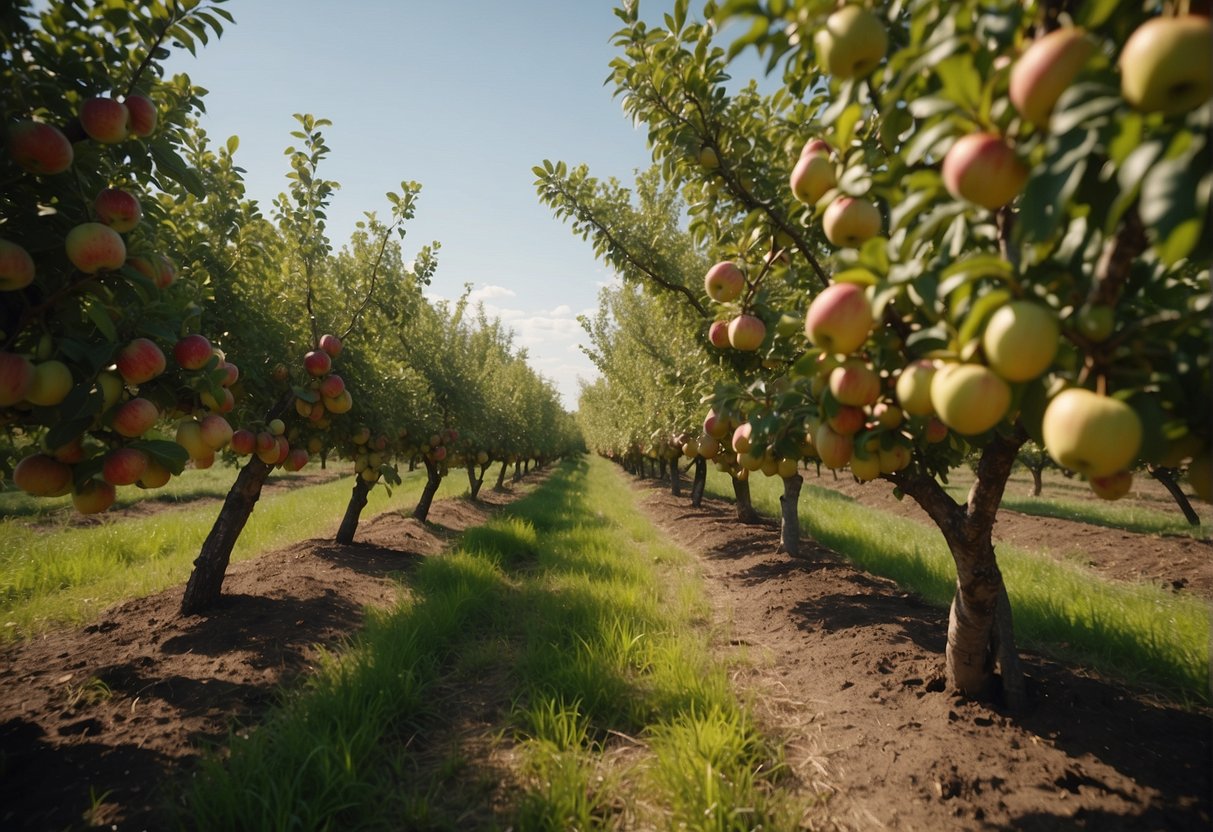
Dive into the crisp world of apple cultivation and get ready to learn the nitty-gritty of growing and harvesting your very own crunchy delights. It’s not just about planting a tree; it’s about the journey from seed to fruit bowl.
Growing Regions
Apples thrive in temperate regions, but they don’t just grow anywhere – they’re picky about their zip code. Gala and McIntosh apples love the northeastern U.S., while the Fuji apple favors the more moderate climates, similar to its namesake Mount Fuji. Down south? Golden Delicious shines bright. In the west, Red Delicious and Granny Smith can often be found enjoying the cool nights and sunny days.
Cultivation Techniques
So, you want to grow some apples? First, you’ve got to check your soil – it’s like the foundation of a house, but for your apple trees. A soil test will be your best friend here. Then, pick a sunny spot because apples are sun worshippers. Pruning is like giving your trees a good haircut; do it regularly to keep them healthy and productive. Variety matters, too – want a crisp Gala? Plant that! In the mood for tart Granny Smith pies? Get those in the ground!
Harvesting and Storage
Imagine you’re a fruit ninja: it’s all about the twist and lift when plucking apples. Too much force means a no-go. Red Delicious and Golden Delicious – they’re like the popular kids peaking in high school, ready to be picked in early fall. Fuji and Gala apples are the studious ones, waiting a bit longer. Storage is key unless you want to turn your apples into a science experiment. Keep them cool; crisper drawers in fridges work, or if you’re an apple baron with a cellar, even better.
Popular Apple Varieties
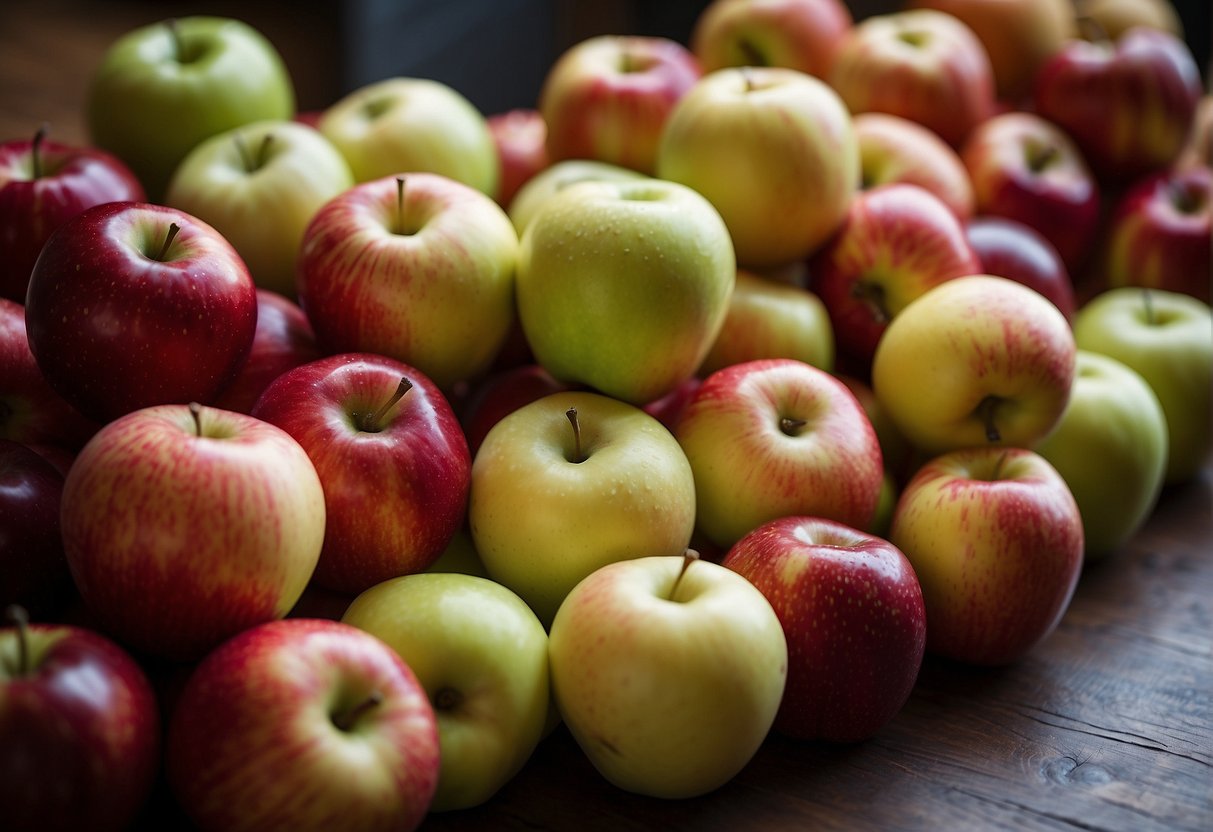
When you’re searching through the produce aisle, specific names jump out, each carrying its unique taste and texture that’s made it a favorite.
Red and Yellow Apples
Gala: Meet the sweet, crisp charmer that’s become a lunchbox legend. A cross between Kidd’s Orange Red and Golden Delicious, it’s the apple you’re likely to reach for when you want a reliable munch.
Fuji: If you’re into the sweet stuff, then you’re probably a fan of Fuji apples. Grown from the soils of Japan, they are heavyweight champions in the sugar department.
- Golden Delicious: Not to be confused with its cousin, the Red Delicious, this golden variety is all about the mellow, honeyed flavor.
- Red Delicious: Despite getting a bit of shade from apple aficionados for being ‘all show and not enough taste,’ their mild flavor and striking ruby skin keep them in the public eye.
- Jonagold: Shake hands with the robust Jonagold, a blend of Jonathan and Golden Delicious that’s both honey-sweet and sharply tart.
- Ambrosia: Fairly new on the block, Ambrosia is like biting into a lightly perfumed cloud – sweet, crisp, and with a divine aroma.
Braeburn: These apples come with a hint of spice and a reputation for being the perfect cooking companion due to their balance of sweet and tart.
Green Apples
- Granny Smith: Here’s the green machine that rules the world of tartness. Its bright green skin is a dead giveaway for that crisp, acidic kick it’s famous for.
Empire: A lovely mash-up of McIntosh and Red Delicious, it’s the kind of apple that’s both sweet and sour—you know, for when you can’t make up your mind.
Newer Apple Cultivars
- Honeycrisp: This is the superstar, the Adele of apples. It’s got the perfect blend of sweet and tart, and a crunch you can hear across the room.
- Pink Lady: Underneath that blush-colored skin lies a fizzy flavor that zings. It’s the jazz hands of the apple world, and it’s not subtle about it.
- Jazz: Speaking of Jazz, it literally has ‘jazz’ in the name—and lives up to it. A bite of this one is like a catchy tune that stays in your head.
- Envy: If apples could swagger, Envy would. It’s the suave newcomer that’s been turning heads with its sweet, slightly tart flavor and beautiful red skin.
Lady Alice: Delicately sweet with a hint of tartness, it’s the Alice in Wonderland in the apple world – mysterious and intriguing.
Less Common Varieties
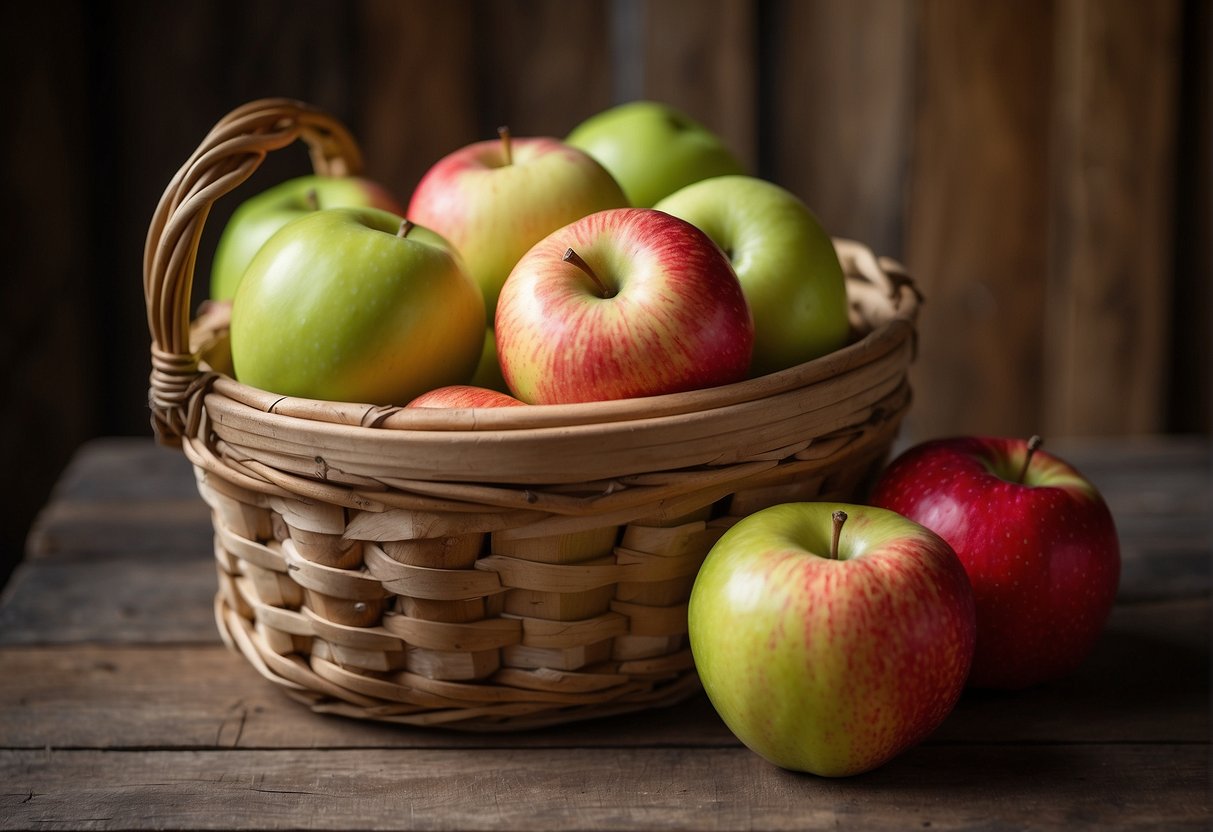
Exploring the world of less common apple varieties, you’re about to get acquainted with some delightful rarities that escape the everyday fruit bowl. Get ready to meet apples that have stood the test of time, boast distinctive traits, and call specific locales home—far from your standard supermarket lineup.
Heirloom Varieties
Heirloom apples, like hidden treasures in the orchard, tell stories of past generations. Take the Northern Spy, for example; your pie wouldn’t know what hit it with this one. Or the Baldwin, with its rich history dating back to a Massachusetts hillside in the 1700s—it’s the apple equivalent of finding a rare coin in your pocket.
Apples with Unique Characteristics
Each apple in this niche has that je ne sais quoi. The Mutsu, also known as Crispin, is a heavyweight contender that offers a refreshing tartness—like biting into a brisk autumn morning. You’ve also got the Winesap, with a zing that’ll play your taste buds like a fine-tuned violin, and the Macoun—imagine if a McIntosh and a Jersey Black had a baby, charmingly thin-skinned with a sweet flourish.
Regional and Rare Varieties
It’s like local folklore but with apples. Melrose, the official state apple of Ohio, is so elusive it might as well come with its own secret handshake. And then there’s the Pink Pearl—not just a pretty face, its flesh a rosy hue you wouldn’t expect from an apple. Far from the limelight, the Belle de Boskoop hails from the Netherlands, and it’s like biting into a sweet and sour candy—complex and entirely memorable.
Apple Products

From the crisp crunch of a fresh apple to the comforting warmth of a homemade apple pie, apples have worked their way into a variety of products that you can enjoy in multiple forms. Let’s take a peek at how these pomaceous delights make their way from orchard to table in all their mouthwatering versatility.
Fresh Consumption
When you bite into a fresh apple, you’re not just enjoying a snack; you’re indulging in a piece of horticultural art. The most popular table apples include:
- Gala: Sweet and snappy, perfect for that midday pick-me-up.
- Fuji: Sugary and crunchy, ideal for satisfying your sweet tooth with a natural treat.
- Honeycrisp: Lives up to its name with a juicy burst and honey-like flavor.
Each variety offers a distinct taste and texture, ensuring there’s an apple to match everyone’s preference. These are the apples you’re likely to stash in your lunchbox or grab for a quick and healthy snack.
Processed Apple Products
The journey from tree to treat doesn’t stop at fresh fruit; apples are masters of transformation. Here’s what can happen when apples get an upgrade:
- Apple Juice: A refreshing staple in fridges around the world.
- Apple Cider: Essentially autumn in a glass, especially when served warm.
- Apple Cider Vinegar: Your secret weapon in dressings and marinades.
- Applesauce: A silky-smooth sidekick to pork chops or a sweet additive in baking.
Processed apple products are convenient and can oftentimes provide a different experience than fresh apples, whether it be in taste, texture, or use.
Apple-Based Recipes
Roll up your sleeves because it’s time to work some culinary magic with these star-studded apple recipes:
- Apple Pie: A classic dessert that screams ‘home’ with every bite. Here’s a simple breakdown:
Ingredient Purpose Apples The star of the show Pie crust Flaky vessel for your apple concoction Cinnamon Spice that brings warmth Sugar Because apples deserve to be sweetened - Apple Stuffing: Introduce apples into your stuffing for a subtle sweetness and delightful texture twist.
- Various Apple Recipes: Think beyond pie – apples can be incorporated into salads, sandwiches, and even tacos!
With these apple-engrained recipes, you can whip up comfort on a plate or adventure in a bowl. Remember, the apple is your oyster!
Health and Nutrition
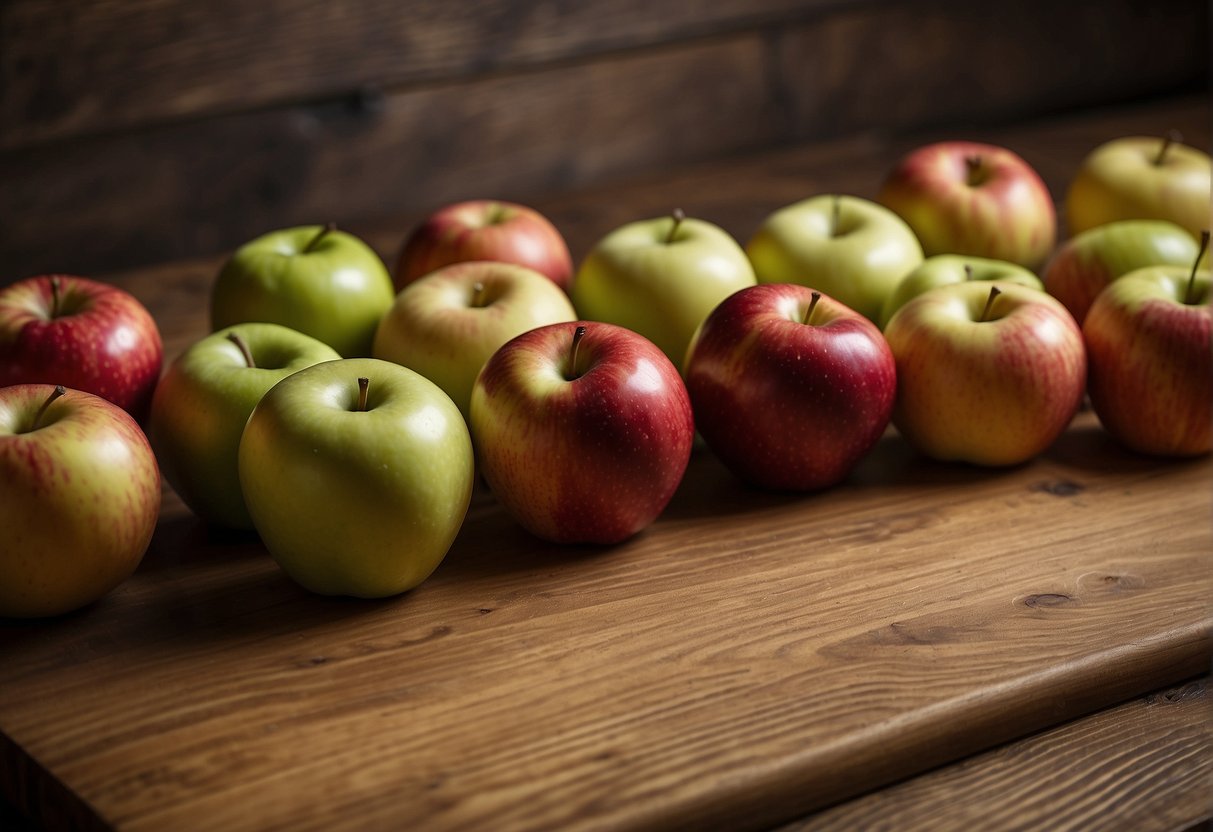
When it comes to apples, you’re not just biting into a juicy snack; you’re diving into a treasure trove of nutrients. These pomaceous goodies are like nature’s candy with benefits. Let’s crunch into the details.
Nutritional Value:
An average-sized apple is a powerhouse of energy, typically packing about 95 calories. But the real stars are the carbs and dietary fiber, making up about 25 grams and 4 grams respectively. This isn’t just filler; it’s fuel for your day-to-day heroics!
- Carbs: 25g
- Dietary Fiber: 4g
- Calories: 95
Dietary Fiber:
Apples are your gut’s best friend. With around 4 grams of fiber, they help keep things moving (if you catch my drift), and contribute to that full, satisfied feeling which can help ward off those pesky snack attacks.
- Soluble fiber: Good for heart and blood sugar levels.
- Insoluble fiber: The MVP for your digestive health.
Vitamins:
Apples come loaded with vitamin C, a trusty sidekick for your immune system. They also offer a cast of other vitamins and minerals in supporting roles, like potassium, which is big on heart health.
- Vitamin C: For your immune system’s shield and repair.
- Potassium: Supports heart health and muscle function.
Remember, not all apples wear capes, but each color and type brings something special to the table. Whether it’s a Granny Smith or a Red Delicious, you’re munching on some serious goodness. Just keep in mind, the skin holds a lot of the magic, so think twice before you peel!
Apple Industry
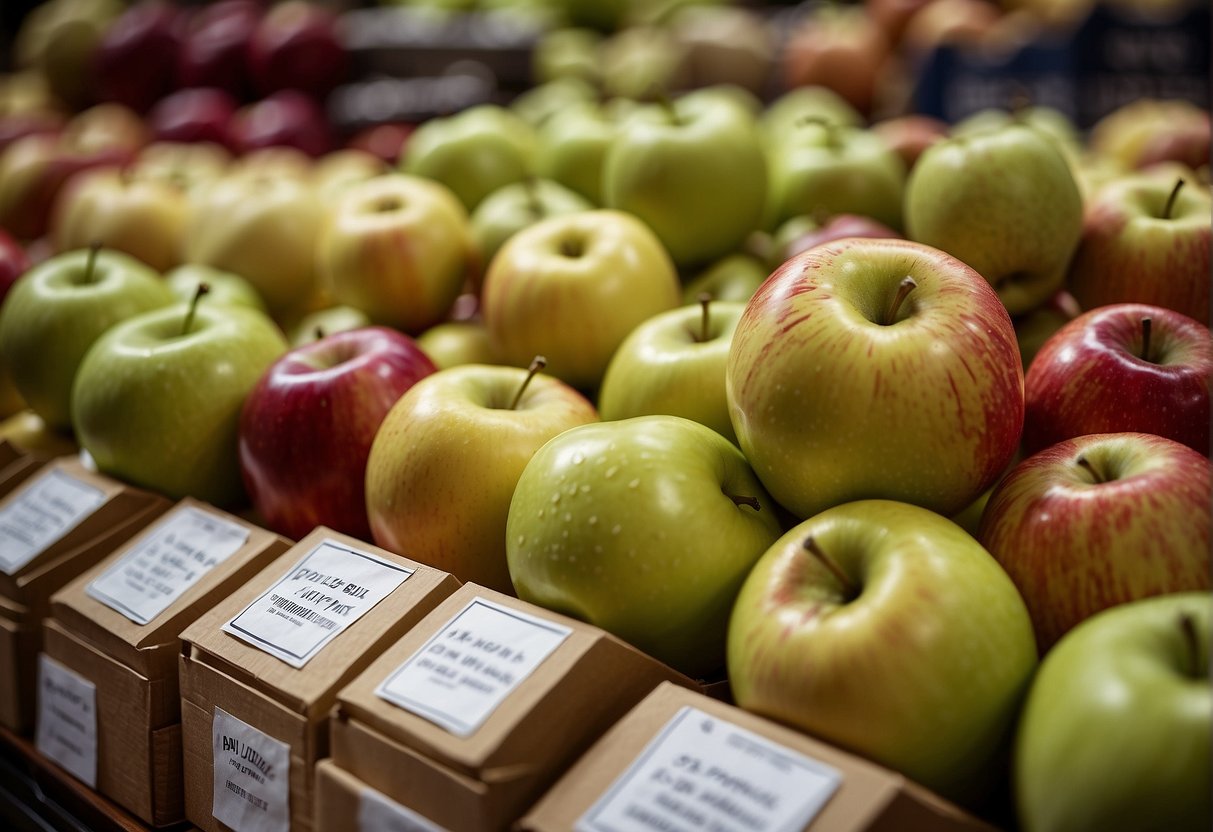
When you take a bite from a crisp apple, have you ever wondered about the journey it took from tree to grocery store? Let’s peel back the layers of the apple industry to see what makes it so a-peel-ing.
Commercial Production
In the United States, commercial apple production is a crucial part of the agriculture sector. You’d be interested to know that there are over 300,000 acres dedicated to apple farming. To get specific, the US Apple organization reports that the US grows more than 100 apple varieties, but a select few top the charts in terms of production. Think of it like a fruit-based popularity contest, and apples like Red Delicious, Gala, and Fuji are winning!
Apple Breeding Programs
Apple breeding programs focus on developing new, hardy, and disease-resistant varieties. A tip of the apple cap to the New York State Agricultural Experiment Station for developing the Freedom Apple — famed for its resilience and disease resistance. Breeding programs are where science and Mother Nature have a little dance, resulting in apples that can withstand the elements and still taste fantastic.
Apple Marketing and Economics
If apples were a company, they’d be among the Fortune 500. The apple market is significant, with annual sales topping $22 billion and contributing $8 billion in wages. It’s safe to say that apples are more than just a tasty snack — they’re a heavyweight in the fruit economy.
